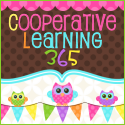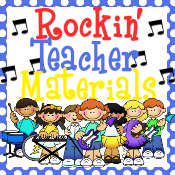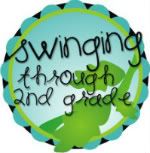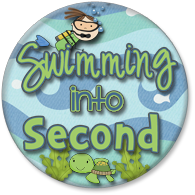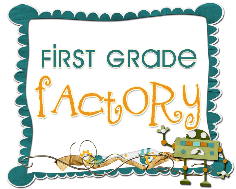Reading Comprehension Strategies for English Language LearnersLydia Breiseth
Comprehension is the goal of reading, but it can be the most difficult skill to master, especially for English language learners (ELLs). ELLs often have problems mastering science, math, or social studies concepts, for example, because they cannot comprehend the textbooks for these subjects.
ELLs at all levels of English proficiency and literacy development will benefit from improved comprehension skills, which allow them to
Read more accurately.
Follow a text or story more closely.
Identify important events and concepts in a text.
Master new concepts in their content-area classes.
Complete assignments and assessments.
Feel motivated to read in school and for pleasure.
There are a number of ways to build ELLs' comprehension skills. Often, standard strategies that teachers use in mainstream classrooms are a good starting point—they just need to be tweaked with ELLs' language and academic needs in mind. This article focuses on strategies that are part of three main approaches: building background knowledge, teaching vocabulary explicitly, and checking comprehension frequently.
1. Build background knowledge.Draw on students' existing knowledge.Students may already possess content knowledge that they cannot yet demonstrate in English. Look for opportunities to make associations between students' experiences and new content. Allow students to use their native language with peers for a quick brainstorm to discover what they know about a topic before presenting their ideas to the whole class.
Build students' background knowledge.Students with limited or interrupted schooling may not have the same level of knowledge as their peers, especially when it comes to historical or cultural topics. When starting a new lesson, look for references that you may need to explicitly explain.
Take students on a tour of the text.Each time you hand out a new textbook, take students on a "virtual tour." Show them different elements of the text, such as the table of contents and the glossary, and discuss how these sections can be helpful. Explain how the text is organized, pointing out bold print, chapter headings, and chapter summaries. Once students learn how to recognize these elements, they will be able to preview the text independently. Remember that students need to know how to use a tool in order for it to be helpful.
Use a "picture-walk."You can use this strategy for fiction or nonfiction books. Walk through the book with the students, pointing out photographs, illustrations, and other graphic elements. Ask them what they notice about the pictures and how they think those details may relate to the story or content.
Use outlines to scaffold comprehension.Provide a brief, simple outline of a reading assignment or an oral discussion in advance of a new lesson. This will help ELLs pick out the important information as they listen or read.
2. Teach vocabulary explicitly.
Focus on key vocabulary:Choose the vocabulary that your students need to know in order to support their reading development and content-area learning. Provide student-friendly definitions for key vocabulary.
Include signal and directional words:Remember that students may also need explicit instruction in signal or directional words ("because" and "explain"), in addition to key content vocabulary ("photosynthesis" and "evolution").
Use a "picture-walk" for vocabulary:Once students know a new word's definition, ask them to connect those new words to the pictures they see in the text.
Teach students to actively engage with vocabulary: Teach students to underline, highlight, make notes, and list unknown vocabulary words as they read.
Give students practice with new words:
Ensure that your students can
Define a word.
Recognize when to use that word.
Understand multiple meanings (such as the word "party").
Decode and spell that word.
Incorporate new words into discussions and activities.For students to really know a word, they must use it—or they will lose it. Use new words in class discussions or outside of class, in other contexts such as on field trips. Give the students as many opportunities to use and master the new vocabulary as possible.
3. Check comprehension frequently.Use informal comprehension checks:To test students' ability to put materials in sequence, for example, print sentences from a section of the text on paper strips, mix the strips, and have students put them in order.
Test comprehension with student-friendly questions:After reading, test students' comprehension with carefully crafted questions, using simple sentences and key vocabulary from the text. These questions can be at the:
Literal level (Why do the leaves turn red and yellow in the fall?)
Interpretive level (Why do you think it needs water?)
Applied level (How much water are you going to give it? Why?)
No matter what the students' proficiency level, ask questions that require higher-level thinking:To probe for true comprehension, ask questions that require students to analyze, interpret, or explain what they have read, such as the following:
What ideas can you add to...?
Do you agree? Why or why not?
What might happen if...?
How do you think she felt...?
Use graphic organizers:Graphic organizers allow ELLs to organize information and ideas efficiently without using much language. Different types include Venn diagrams, K-W-L charts, story maps, cause-and-effect charts, and time lines.
Provide students with many different ways to show what they know:
Drawings, graphs, oral interviews, posters, and portfolios are just a few ways that students can demonstrate understanding as they are beginning to develop their reading and writing skills in English.
Summarize: Ask students to use the following strategies to summarize, orally or in writing, what they have read:
Retell what you read, but keep it short.
Include only important information.
Leave out less important details.
Use key words from the text.
It may be challenging to improve ELLs' comprehension skills, but it is well worth the extra effort to put them on the path to becoming successful readers.
















